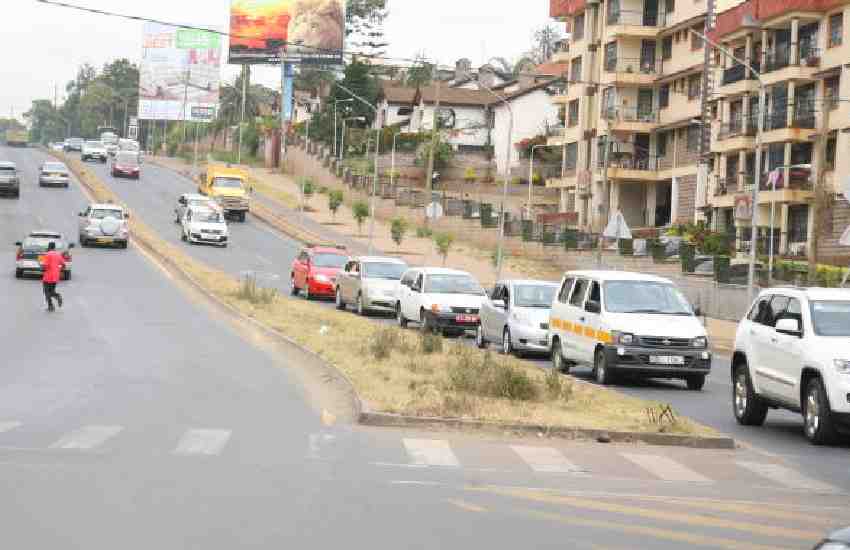
A customs official with a lucrative government agency landed a Sh23 million windfall from a ‘business deal’ in August 2016.
Read Also: ‘Rich’ foreigners move to Kileleshwa, drug women into dirty recordings
Ben Mutuma, a father of three moved out of his three-bedroom house in Nairobi’s Nyayo Estate to a four-bedroom apartment in the leafy suburb of Lavington, Nairobi. Mutuma forked out Sh1.5 million in annual rent besides driving his children to a high-end school in his new Toyota Land Cruiser. His wife was content to gas around in a Mercedes.
God was in heaven, life was good here on earth. That was until he did the math and was shocked at the total costs of living in Lavington. “Every month, I had to part with almost 24,000 as service charge, yet my rent in Nyayo Phase One was Sh30,000 and service charge was Sh2,500 and paid by the landlord,” says Mutuma, adding that his wealthier neighbours didn’t seem to mind the service charge. When Mutuma’s lease expired, he retraced his steps back to Nyayo Estate and “the night I moved back to Eastlands, I slept soundly for the first time in more than a year.”
Nairobi is zoned. High-density areas are for low-income earners and low-density areas are for high-income earners, meaning there are additional costs to living in places with evergreen trees even during dry spells. Before and after independence, areas like Lavington, Karen, Gigiri, parts of Runda and Muthaiga, were turned into low-density areas with one family owning a large parcel of land. Only single-family dwellings were allowed in what were exclusively zoned areas for wazungu. Asians took the next best parcels in Nairobi’s Westlands, Parklands and Pangani, where land prices were not exorbitant.
But city zoning laws that have informed planning are currently under pressure due to population explosion. There are now high-rise buildings in places like Lavington which was not the case before zoning laws were relaxed. The rising middle class is another reason for the rezoning of various estates within Nairobi to accommodate their ‘disposable income.’ Peter Kibinda, an urban planner, told The Nairobian that zoning regulations define the type of structures - both residential and commercial - to be designed in a given area beside the regulations being informed by the availability of utilities such as water, electricity and roads.
“High-density areas were designed for low-income earners who needed more dense residential developments as can be seen in much of Nairobi’s Eastlands. Medium-density areas incorporated the middle class in areas such as Buruburu, while the leafy suburbs of Karen, Muthaiga and Runda were zoned as low-density areas,” he says, adding that the flocking of ‘new money’ into low-density areas is gradually changing the zoning. For example, Kilimani and Kileleshwa estates’ well-planned, single dwelling unit areas now spot high-rise apartments as new zoning regulations come into effect, such that those with swimming pools have to contend with prying eyes from the fifth floor of an adjacent apartment.
Read Also: High-end brothels: Kilimani, a place of pleasure and death
In December 2012, the Cabinet passed a resolution that allowed the rezoning of various estates within the city to accommodate more residential units. The Cabinet move followed a request by the then Nairobi City Council to allow high-density developments in previously low-density zones. The move was also meant to bring down the cost of land in such areas. The previous rezoning exercise was carried out in 2004 and opened up parts of Kileleshwa, Kilimani, Woodley and Parklands. According to the then Kenya Property Developers Association chairperson Mucai Kunyiha, rezoning some of Nairobi’s posh areas was inevitable. He attributes the high rate of development in these areas to developers moving faster than planners.
However, Kunyiha says current economics demand that a developer make maximum use of the limited space due to rising property prices. “Imagine someone buying a plot for Sh100 million. Do you really expect him to put a townhouse that will not pay back the cost of land? How would you feel if you built such a townhouse and the next fellow who buys the next plot erects high-rise apartments?” poses Kunyiha. Though Kunyiha appreciates the local market’s flexibility, he says there needs to be policy consistency in the way the city is zoned.
First published by The Nairobian in 2017
 The Standard Group Plc is a multi-media organization with investments in media
platforms spanning newspaper print
operations, television, radio broadcasting, digital and online services. The
Standard Group is recognized as a
leading multi-media house in Kenya with a key influence in matters of national and
international interest.
The Standard Group Plc is a multi-media organization with investments in media
platforms spanning newspaper print
operations, television, radio broadcasting, digital and online services. The
Standard Group is recognized as a
leading multi-media house in Kenya with a key influence in matters of national and
international interest.
